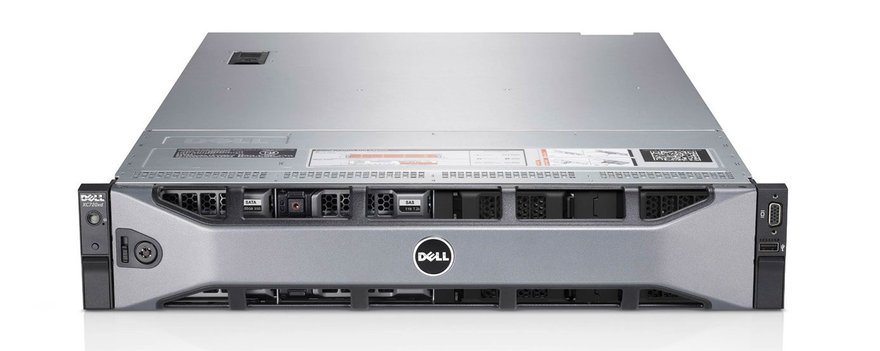Wasting no time after signing an OEM agreement with software-defined storage provider Nutanix, on Tuesday morning, Dell has announced it is incorporating Nutanix software in a new XC class of pre-configured "hyperscale" servers.
Usually "hyperscale" refers to hardware or services that apply to the highest tier of customers — major cloud service providers like Amazon, and Internet service giants like Facebook and Twitter. They’re the ones setting standards for new classes of hardware designed to be rapidly incorporated into pre-established environments with minimal provisioning. (Too bad the "Lego" trademark was already taken.)
But with XC series, Dell is hoping to develop a class of "building block" hardware that fulfills these large-scale requirements, while at the same time being accessible to customers looking to build incremental additions on their existing infrastructures.
Two pools of liquid fuel
"There are these hyperscale providers — Google, Amazon, Facebook — that have built out their data centers in what we refer to as the ‘new IT way,’" explains Travis Vigil, executive director of Dell’s storage division, in an interview with DatacenterDynamics. "This new way has the server as the building block of the data center, and you layer in software-defined storage, software-defined networking, to build out that data center. And that’s a very different architecture than what enterprises have been building for many years, especially for storage and networking."
Think of an XC-series server as providing two classes of fluid resources to separate pools: one for compute power, another for storage. Simply by adding a server block to a network, the contents of its virtual fluids are subsumed into their respective pools. So much compute power and so much storage are added to the virtual mix. Vigil obviously opened the door here for network switching or routing to be added to future editions.
In this initial round, there will be 5 models of Dell XC server. Each is equipped with a pair of Intel Xeon E5 v2 processors, starting with the 2.0 GHz E5-2620 on the low end XC720xd-A5, and proceeding to the 3.0 GHz E5-2690 in the two models furthest up the line, the XC720xd-C5 and C7. Storage is built into each XC block in the form of paired SSDs and HDDs, all behind a built-in LSI 9207 SAS bus adapter. The A5 is equipped with 2 200 GB SSD and 4 1 TB HDD drives, while the C5 features 2 800 GB SSDs and 10 2 SSDs, trading some capacity for speed.
Workload-defined configurations
XC blocks can mix-and-match, Vigil said; it’s indeed possible for B5 or B7 to be built out first and C5 or C7 models to be added later, for example. Though multiple hypervisors are supported, including VMware, Microsoft’s Hyper-V, and KVM, the virtualization orchestrator can clearly compensate for the speed and performance differences between the hardware classes.
TB HDDs, for a wide range of storage options. The C7 swaps out two of the HDDs for
While Vigil unsurprisingly describes this stackability of blocks into pools as an elegant way to build out infrastructure, he concedes that the architecture is perhaps best suited to certain classes of workloads. Virtual desktop infrastructure is certainly one of them. One other workload suggested by Dell senior marketing manager Dan O’Farrell is a call center — especially a new one that starts out with a nucleus of workers, and adds to that nucleus as the business grows.
"If you add more of these task workers, you simply add another one of these appliances as a virtual building block, essentially," explains O’Farrell. "The beauty here is, it doesn’t take tons of gadgetry and figuring out, ‘Man, how much storage do I need? How much server do I need?’ — which is the traditional approach. You characterize your user types, we give you this configuration designed specifically for those types of users, and we can support them immediately right out of the gate — anywhere between 150 and 200 users of that type."
The more basic XC configurations may be best suited to call centers, O’Farrell says, where the number of different tasks is low but the quantity of those tasks is high. When you bring knowledge workers into the mix, he suggests customers start with a higher-order model, which may add significantly more RDIMM and low-voltage LRDIMM memory. But when users are opening multiple windows containing full-motion multimedia or 3D rendering, go for the higher-order configurations.
Once you get above that point where you’ve got maybe a couple of hundred users of a particular type," he continues, "you merely add another XC appliance, and it scales linearly. You can start very cost-effectively as your first step. Then as you grow, or maybe there’s some M&A action — or, let’s say I’m satisfying the needs of a bunch of task workers, and now I want to fold my engineering team into virtual desktops. Guess what, I just grab a configuration that’s designed specifically for that type of user, I add it to my existing one, and it’s treated as a single, virtual entity by the Nutanix software."
Travis Vigil tells us built-in Nutanix will enable seamless, scale-out storage capacity for whatever XC classes may be connected, resulting in the appearance to the orchestrator of a single virtual appliance.
It is clearly not "hyperscale" the way we were first told to think about it. But it is scalability on a much more fluid level, inspired by the Web-scale architectures that the world’s biggest server customers are now demanding.

